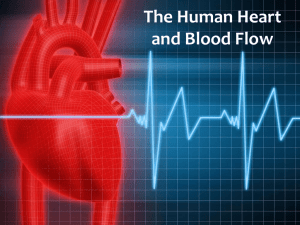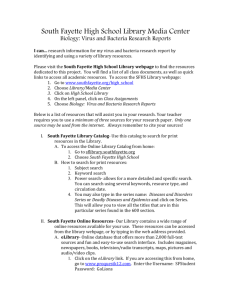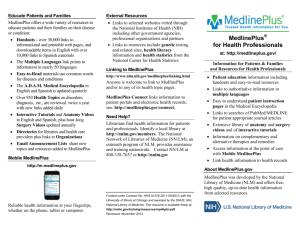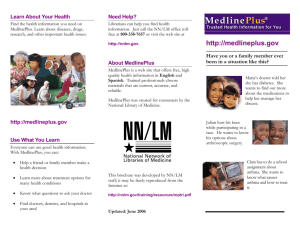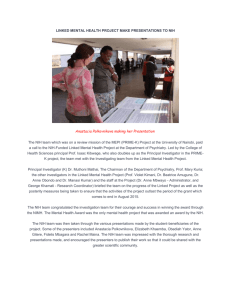the PDF - Gut Check: Know Your Medicine
advertisement
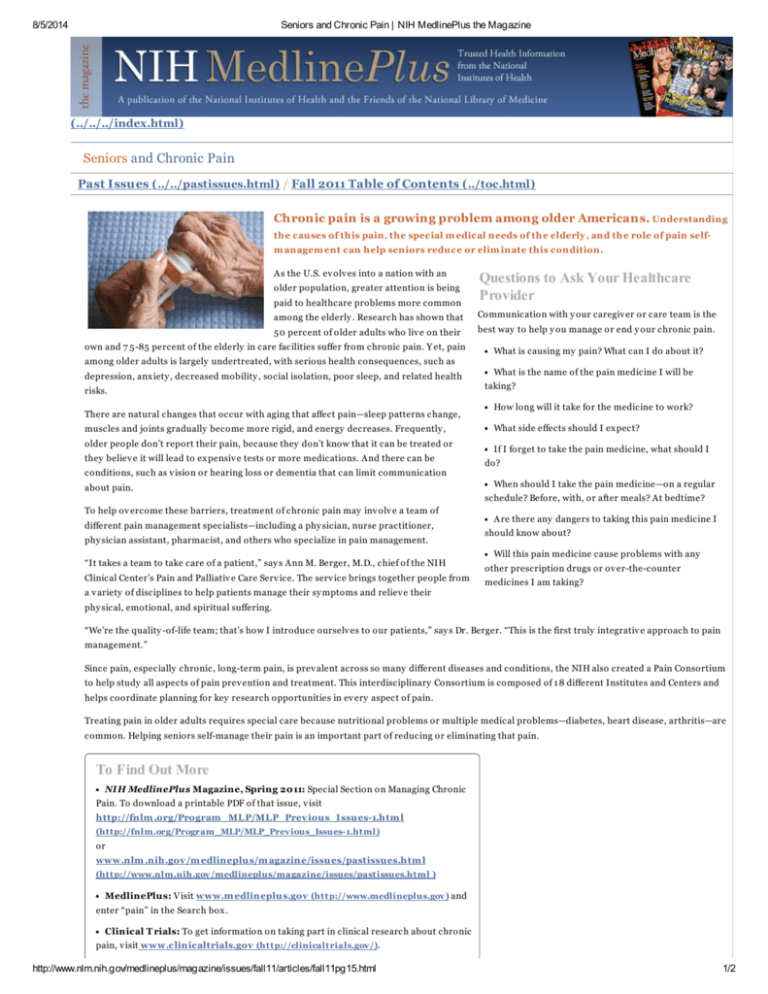
8/5/2014 Seniors and Chronic Pain | NIH MedlinePlus the Magazine Skip Nav igation Bar (#skipnav) (../../../index.html) Seniors and Chronic Pain Past Issues (../../pastissues.html) / Fall 2011 Table of Contents (../toc.html) Chronic pain is a growing problem among older Americans. Understanding the causes of this pain, the special m edical needs of the elderly , and the role of pain selfm anagem ent can help seniors reduce or elim inate this condition. As the U.S. ev olv es into a nation with an paid to healthcare problems more common Questions to Ask Your Healthcare Provider among the elderly . Research has shown that Communication with y our caregiv er or care team is the 50 percent of older adults who liv e on their best way to help y ou manage or end y our chronic pain. older population, greater attention is being own and 7 5-85 percent of the elderly in care facilities suffer from chronic pain. Y et, pain What is causing my pain? What can I do about it? among older adults is largely undertreated, with serious health consequences, such as depression, anx iety , decreased mobility , social isolation, poor sleep, and related health risks. There are natural changes that occur with aging that affect pain—sleep patterns change, muscles and joints gradually become more rigid, and energy decreases. Frequently , older people don’t report their pain, because they don’t know that it can be treated or they believ e it will lead to ex pensiv e tests or more medications. And there can be conditions, such as v ision or hearing loss or dementia that can limit communication about pain. What is the name of the pain medicine I will be taking? How long will it take for the medicine to work? What side effects should I ex pect? If I forget to take the pain medicine, what should I do? When should I take the pain medicine—on a regular schedule? Before, with, or after meals? At bedtime? To help ov ercome these barriers, treatment of chronic pain may inv olv e a team of different pain management specialists—including a phy sician, nurse practitioner, phy sician assistant, pharmacist, and others who specialize in pain management. “It takes a team to take care of a patient,” say s Ann M. Berger, M.D., chief of the NIH Clinical Center’s Pain and Palliativ e Care Serv ice. The serv ice brings together people from Are there any dangers to taking this pain medicine I should know about? Will this pain medicine cause problems with any other prescription drugs or ov er-the-counter medicines I am taking? a v ariety of disciplines to help patients manage their sy mptoms and reliev e their phy sical, emotional, and spiritual suffering. “We’re the quality -of-life team; that’s how I introduce ourselv es to our patients,” say s Dr. Berger. “This is the first truly integrativ e approach to pain management.” Since pain, especially chronic, long-term pain, is prev alent across so many different diseases and conditions, the NIH also created a Pain Consortium to help study all aspects of pain prev ention and treatment. This interdisciplinary Consortium is composed of 1 8 different Institutes and Centers and helps coordinate planning for key research opportunities in ev ery aspect of pain. Treating pain in older adults requires special care because nutritional problems or multiple medical problems—diabetes, heart disease, arthritis—are common. Helping seniors self-manage their pain is an important part of reducing or eliminating that pain. To Find Out More NIH MedlinePlus Magazine, Spring 2011: Special Section on Managing Chronic Pain. To download a printable PDF of that issue, v isit http://fnlm .org/Program _MLP/MLP_Prev ious_Issues-1.htm l (ht t p://fnlm.org/Program_MLP/MLP_Previous_Issues-1.ht ml) or www.nlm .nih.gov /m edlineplus/m agazine/issues/pastissues.htm l (ht t p://www.nlm.nih.gov/medlineplus/magazine/issues/past issues.ht ml ) MedlinePlus: V isit www.m edlineplus.gov (ht t p://www.medlineplus.gov) and enter “pain” in the Search box . Clinical T rials: To get information on taking part in clinical research about chronic pain, v isit www.clinicaltrials.gov (ht t p://clinicalt rials.gov/). http://www.nlm.nih.gov/medlineplus/magazine/issues/fall11/articles/fall11pg15.html 1/2 8/5/2014 Seniors and Chronic Pain | NIH MedlinePlus the Magazine NIH Clinical Center: For more about clinical trials at the NIH Clinical Center, go to http://clinicalcenter.nih.gov (ht t p://clinicalcent er.nih.gov) (#). Or call 1 -866999-1 1 1 2 (TTY 1 -866-41 1 -1 01 0). Fall 201 1 Issue: V olume 6 Number 3 Page 1 5 MedlinePlus (ht t p://medlineplus.gov/) | Subscribe (ht t p://www.nlm.nih.gov/medlineplus/magazine/subscribe.ht ml) | Magazine Inform ation (../../../magazineinfo.ht ml) | Contact Us (ht t p://apps.nlm.nih.gov/medlineplus/cont act /index.cfm? from=ht t p://www.nlm.nih.gov/medlineplus/magazine/&lang=EN)| Viewers & Play ers (ht t p://www.nlm.nih.gov/medlineplus/plugins.ht ml) Friends of the National Library of Medicine (FNLM) (ht t p://www.fnlm.org) http://www.nlm.nih.gov/medlineplus/magazine/issues/fall11/articles/fall11pg15.html 2/2
